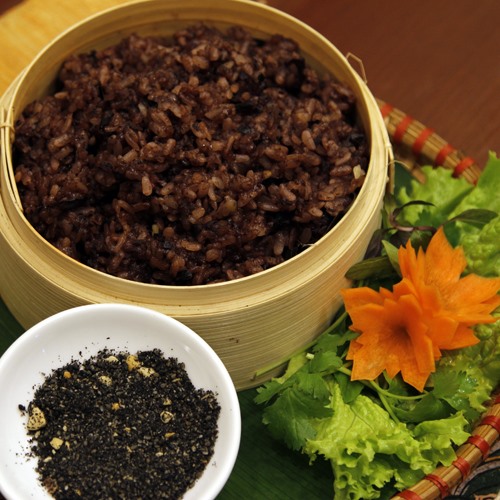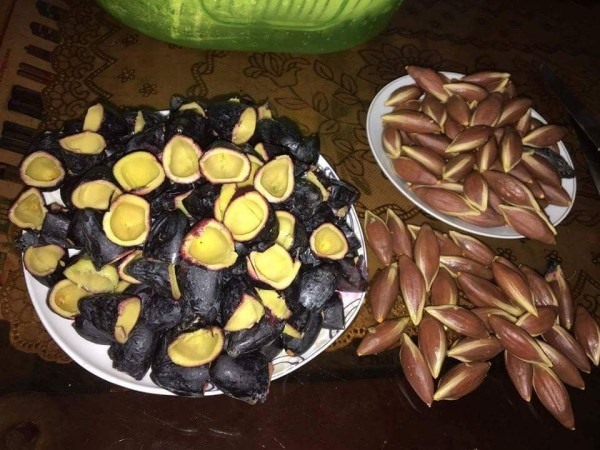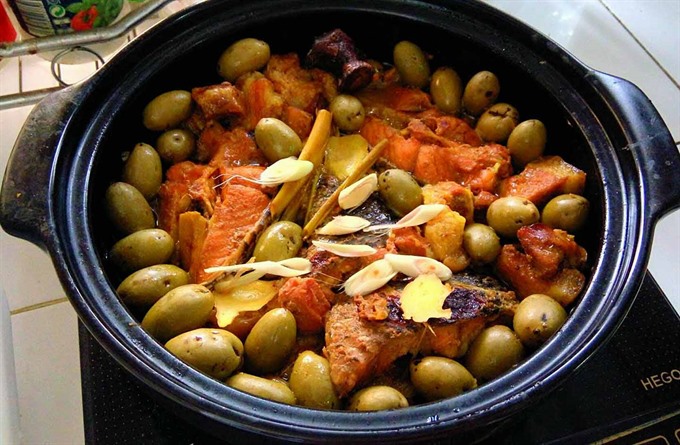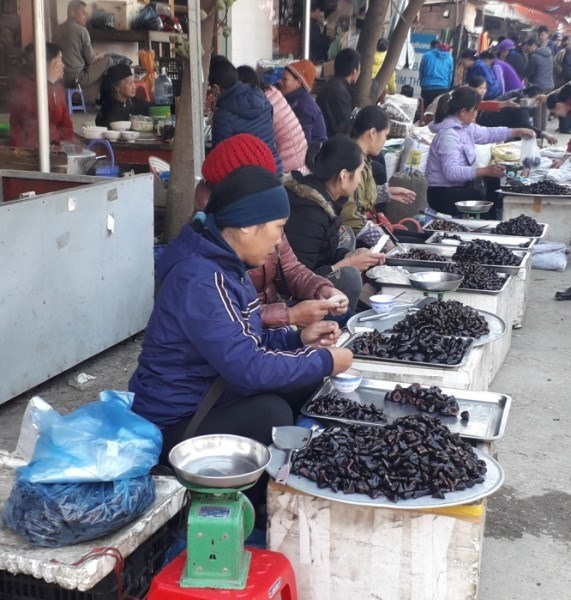 Life & Style
Life & Style

Cao Bằng is not only well known for its natural beauty at sites such as Bản Giốc Waterfall, Pác Bó Caves and Thang Hen Lake, but also its trám đen, a wild fruit that the Tày and Nùng ethnic groups pick in the forest to cook into many tasty dishes like trám kho (braised with pork rinds) and xôi trám, a favourite dish of guests and travellers.
 |
| Sticky rice mixed with trám đen is a speciality of Cao Bắng. Photos baocaobang.vn |
By Thanh Hà
Cao Bằng is not only well known for its natural beauty at sites such as Bản Giốc Waterfall, Pác Bó Caves and Thang Hen Lake, but also its trám đen, a wild fruit that the Tày and Nùng ethnic groups pick in the forest to cook into many tasty dishes like trám kho (braised with pork rinds) and xôi trám, a favourite dish of guests and travellers.
When I was a little girl, each time my grandmother cooked braised trám đen with pork rinds, my sisters and brothers would crowd around the tray, mouths watering as they waited for the dish. It was so tasty that each of us could eat four or five bowls.
My grandmother had to prevent my young brothers from eating too much because she was afraid they would suffer from indigestion.
 |
| Boiled trám đen and its seeds are key to cooking xôi trám. |
The fruit is the shape of a thumb and has a dark purple colour. My grandmother would soak them in hot water (between 25 and 30 degrees Celcius) for half an hour until they became soft.
She would ask us to cut each fruit in half, dusting every piece lightly with a mix of salt and better before laying them out to be dried by the wind.
“The dried black trám becomes very tasty to cook steamed trám, to braise it with pork rinds or to make xôi trám (trám cooked with khẩu pét, a special glutinous rice planted only in Cao Bằng),” my grandmother said.
Trám season falls in autumn, but most households in my Cao Bằng town keep the dried fruit year round to eat as a snack or cook into xôi trám for big events such as engagements and weddings.
 |
| White trám braised with carp is a treat. |
To cook a tasty xôi trám, it is important to choose glutinous black trám that is soft and fragrant. Fry the boiled pieces with cooking oil, fish sauce and dried onions before mixing them with cooked glutinous rice. Stir well until the trám sticks with the rice, creating a light purple color with an aromatic flavour.
“The soft and buttery trám mixed with fragrant rice is so attractive and delicious that it would impress even the most fastidious diners,” my grandmother said. She pointed out that although the dish is popular, it is considered a luxury because quality trám đen is only planted in Cao Bằng Province where the land is most suitable for the fruit.
For us the fruits are valuable because they are a local speciality that is a distillation of the soul of our province’s land and rivers. In the past it only grew in the forests, but now locals know how to grow it in their gardens.
Farmer and herbalist Nông Văn Thọ said he never dares to climb up trám trees to collect the fruit for fear of damaging the plants. Instead he uses a long stick to get them down.
 |
| Farmers in Cao Bằng’s Nguyên Bình District sell trám đen. |
“When a trám tree is flowering, it emits a very aromatic fragrance, attracting many kinds of insects to come to fertilise the plant,” Thọ said.
Like black trám, white trám is also used by locals to cook. They put it in fish soup or braise it with pork. But the best preparation is braised with river carp in a wood-fired oven. Thọ says this is better than using a gas cooker because it adds a smoky fragrance.
These two sorts of trám are rich in nutrition with high antioxidant levels. They are also richer in calcium, zinc, potassium and other vitamins than other fruits, Thọ said, noting that trám đen can treat ailments such as chronic pharyngitis, headache, tympanites and colds.
Nowadays, people from lowland areas come to Cao Bằng to purchase white trám fruits to make salted dry fruit that sell very well to local young people and overseas Vietnamese, he said. — VNS




